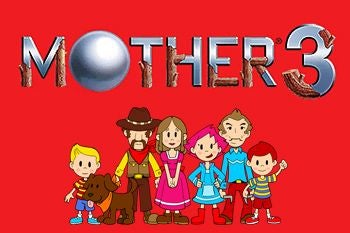Definition of mothers in the Definitions.net dictionary. Meaning of mothers. What does mothers mean? Information and translations of mothers in the most comprehensive dictionary definitions resource on the web. By clicking the “Subscribe” button, you are subscribing to Mother’s Market & Kitchen rewards program and agree to receive special offers and other information by text message and email on a periodic basis. The church has now become the International Mother's Day Shrine. It is a tribute to all mothers and has been designated as a National Historic Landmark. Mother's Day has become a day that focuses on generally recognizing mothers' and mother figures' roles. Mother's Day has also become an increasingly important event for businesses in recent years. Mother's Cocktail Menu is short and precise. It is based primarily on classic Italian spirits including Vermouth, Frangelico and Amaretto. Whereas our first mother beer was brewed in Bornholm, our latest three new beers, respectively an IPA, a Pilsner and a Classic are based on our wild sourdough yeast – the same that gives mother pizzas their characteristic sourdough tang – developed.
| Mother Orange Tree | |
|---|---|
| Location | 400 Glen Drive, Oroville, California |
| Coordinates | 39°30′40″N121°30′15.4″W / 39.51111°N 121.504278°WCoordinates: 39°30′40″N121°30′15.4″W / 39.51111°N 121.504278°W |
| Reference no. | 1043[1] |
The Mother Orange Tree is the oldest living orange tree in Northern California. The California Historical Landmark is located at 400 Glen Drive in Oroville, California.[1]
History[edit]
Mothers And Sons Videos
Originally planted in Bidwell's Bar near the Bidwell Bar Bridge, the tree is a Mediterranean sweet orangeCitrus × sinensiscultivar. The citrus rootstock was brought from Mazatlán, Mexico, on a shipping vessel. The two-year-old orange tree, which was a novelty in Northern California at the time, was purchased in 1856 by Judge Joseph Lewis in the city of Sacramento and planted at the western approach to the bridge.
As the years passed and the tree flourished, growing to a height of over 60 feet (18 m), it was a favorite attraction of miners. They would sample its fruit and save seeds to plant in the dooryards of their cabins. On average, it yielded about 600 pounds (273 kg) of oranges that ripened between February and May each year.
Transplanting[edit]
The tree has been transplanted twice: once in 1862 to avoid flooding of the Feather River; and a second time in 1964 during the construction of Oroville Dam when it was moved to the California State Park Headquarters in Oroville. James Edward Huse, a crane operator with Bigge construction was chosen to move the Mother Orange in 1964 due to his ancestors’ involvement in transporting the tree originally.The tree's survival proved that the citrus industry could thrive in the colder climate of Northern California, encouraging many people to grow oranges in the area around Oroville, although the vast majority produced in the region are of the navel orange variety instead.
Recent events[edit]
In 1998, a severe frost struck and the tree stopped bearing fruit for a number of years. As a result of the frost, decay fungus entered the trunk and hollowed it out. To ensure preservation of the tree, propagation experts at the University of California, Riverside successfully cloned the tree in 2003 and three clones were brought to Oroville for planting. The tree has since resumed fruit production.
The California Historical Landmarkcommemorative plaque for the bridge may be found near the tree.
See also[edit]

- Eliza Tibbets - founder of the California citrus industry
References[edit]

- ^ ab'California Historical Landmarks: Butte County'. Office of Historical Preservation, California State Parks. Retrieved 2012-10-06.
- Ek, Richard, Old Mother Orange, Chico News and Review, May 1, 2003
David's Bridal Mothers Dresses
Mothers
Mother's Ring
Mothers was a club in the Erdington district of Birmingham, West Midlands, during the late 1960s and early 1970s. Mothers opened above an old furniture store in Erdington High Street on 9 August 1968. The club, run by John 'Spud' Taylor and promoter Phil Myatt, closed its doors on 3 January 1971. Between these times, more than 400 acts performed there, many of whom went on to greater success.Well known live recordings that took place in Mothers were the recordings that Pink Floyd released on Ummagumma, recorded on 27 April 1969., and parts of 'Facelift' by Soft Machine, released on Third, recorded 11 January 1970.The Who performed Tommy and Traffic's world debut took place at Mothers along with fledgling rock bands like Black Sabbath playing some of their earliest gigs there.Some of the other well known rock bands and artists to play Mothers include: Family, Fleetwood Mac,John Mayall's Bluesbreakers, Eclection, Edgar Broughton Band, Free, Roy Harper, Blodwyn Pig, Strawbs, Quintessence, Steppenwolf, Deep Purple, The Deviants, Jethro Tull, Jon Hiseman's Colosseum, Skid Row, The Nice, Tyrannosaurus Rex, Elton John, King Crimson, Led Zeppelin, Soft Machine, The Chicago Transit Authority, Moby Grape, Canned Heat and the Bonzo Dog Doo-Dah Band.